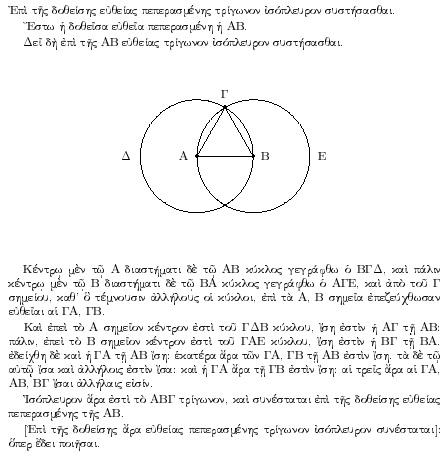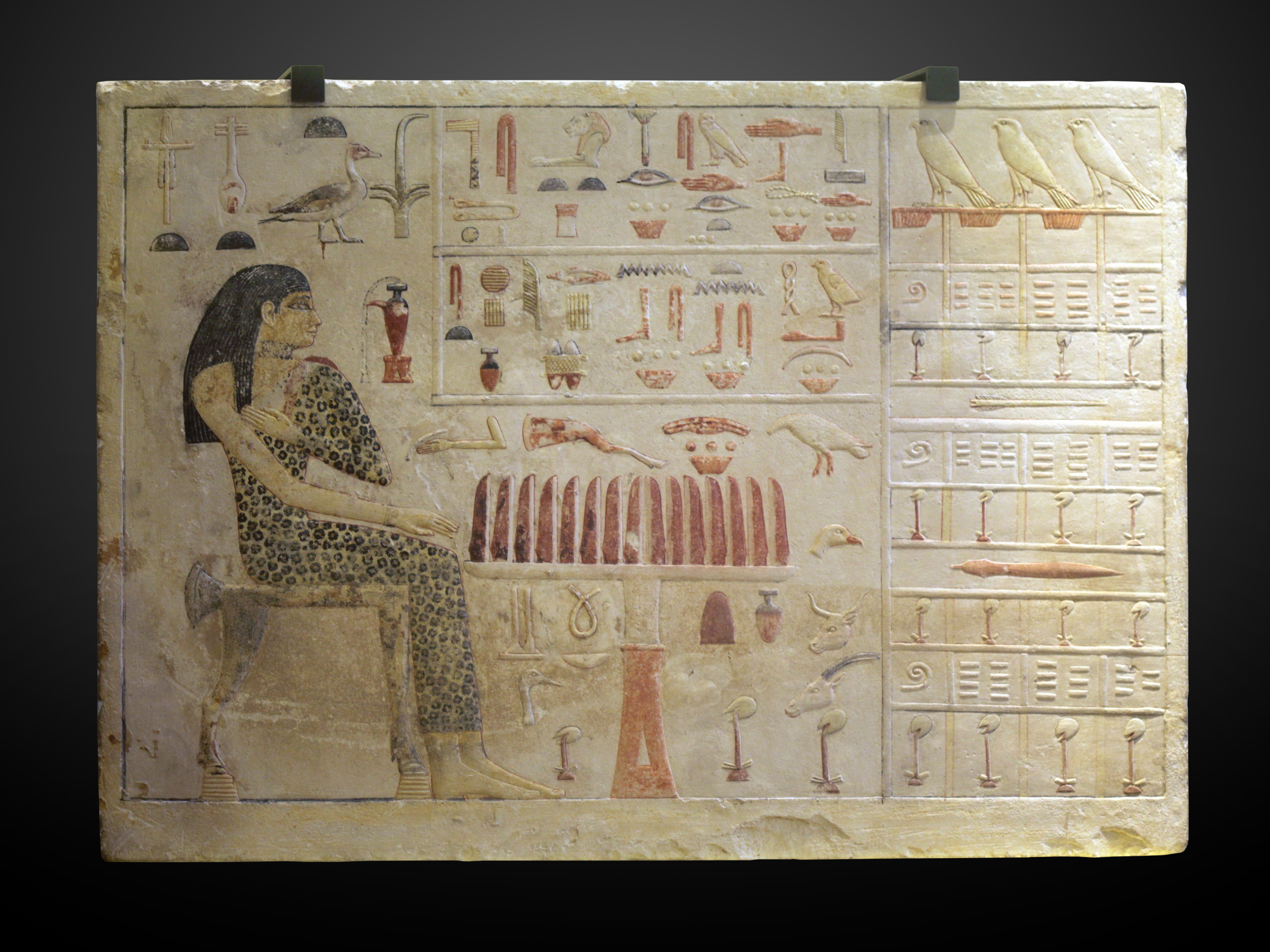|
Egyptian Algebra
In the history of mathematics, Egyptian algebra, as that term is used in this article, refers to algebra as it was developed and used in ancient Egypt. Ancient Egyptian mathematics as discussed here spans a time period ranging from 3000 BC to ca. 300 BC. We only have a limited number of resources (problems) from ancient Egypt that concern algebra. Problems of an algebraic nature appear in both the Moscow Mathematical Papyrus (MMP) and in the Rhind Mathematical Papyrus (RMP) as well as several other sources. Fractions The mathematical writings show that the scribes used (least) common multiples to turn problems with fractions into problems using integers. The multiplicative factors were often recorded in red ink and are referred to as Red auxiliary numbers. Aha problems, linear equations and false position Aha problems involve finding unknown quantities (referred to as Aha) if the sum of the quantity and part(s) of it are given. The Rhind Mathematical Papyrus also contains ... [...More Info...] [...Related Items...] OR: [Wikipedia] [Google] [Baidu] |
History Of Mathematics
The history of mathematics deals with the origin of discoveries in mathematics and the mathematical methods and notation of the past. Before the modern age and the worldwide spread of knowledge, written examples of new mathematical developments have come to light only in a few locales. From 3000 BC the Mesopotamian states of Sumer, Akkad and Assyria, followed closely by Ancient Egypt and the Levantine state of Ebla began using arithmetic, algebra and geometry for purposes of taxation, commerce, trade and also in the patterns in nature, the field of astronomy and to record time and formulate calendars. The earliest mathematical texts available are from Mesopotamia and Egypt – '' Plimpton 322'' ( Babylonian c. 2000 – 1900 BC), the ''Rhind Mathematical Papyrus'' ( Egyptian c. 1800 BC) and the '' Moscow Mathematical Papyrus'' (Egyptian c. 1890 BC). All of these texts mention the so-called Pythagorean triples, so, by inference, the Pythagorean theorem seems to be the most anci ... [...More Info...] [...Related Items...] OR: [Wikipedia] [Google] [Baidu] |
Algebra
Algebra () is one of the broad areas of mathematics. Roughly speaking, algebra is the study of mathematical symbols and the rules for manipulating these symbols in formulas; it is a unifying thread of almost all of mathematics. Elementary algebra deals with the manipulation of variables (commonly represented by Roman letters) as if they were numbers and is therefore essential in all applications of mathematics. Abstract algebra is the name given, mostly in education, to the study of algebraic structures such as groups, rings, and fields (the term is no more in common use outside educational context). Linear algebra, which deals with linear equations and linear mappings, is used for modern presentations of geometry, and has many practical applications (in weather forecasting, for example). There are many areas of mathematics that belong to algebra, some having "algebra" in their name, such as commutative algebra, and some not, such as Galois theory. The word ''algebra'' is ... [...More Info...] [...Related Items...] OR: [Wikipedia] [Google] [Baidu] |
Ancient Egyptian Mathematics
Ancient Egyptian mathematics is the mathematics that was developed and used in Ancient Egypt 3000 to c. , from the Old Kingdom of Egypt until roughly the beginning of Hellenistic Egypt. The ancient Egyptians utilized Egyptian numerals, a numeral system for counting and solving written mathematical problems, often involving Ancient Egyptian multiplication, multiplication and Egyptian fractions, fractions. Evidence for Egyptian mathematics is limited to a scarce amount of List of ancient Egyptian papyri, surviving sources written on papyrus. From these texts it is known that ancient Egyptians understood concepts of Egyptian geometry, geometry, such as determining the surface area and volume of three-dimensional shapes useful for Ancient Egyptian architecture, architectural engineering, and Egyptian algebra, algebra, such as the false position method and quadratic equations. Overview Written evidence of the use of mathematics dates back to at least 3200 BC with the ivory labels fo ... [...More Info...] [...Related Items...] OR: [Wikipedia] [Google] [Baidu] |
Moscow Mathematical Papyrus
The Moscow Mathematical Papyrus, also named the Golenishchev Mathematical Papyrus after its first non-Egyptian owner, Egyptologist Vladimir Golenishchev, is an ancient Egyptian mathematical papyrus containing several problems in arithmetic, geometry, and algebra. Golenishchev bought the papyrus in 1892 or 1893 in Thebes. It later entered the collection of the Pushkin State Museum of Fine Arts in Moscow, where it remains today. Based on the palaeography and orthography of the hieratic text, the text was most likely written down in the 13th Dynasty and based on older material probably dating to the Twelfth Dynasty of Egypt, roughly 1850 BC.Clagett, Marshall. 1999. Ancient Egyptian Science: A Source Book. Volume 3: Ancient Egyptian Mathematics. Memoirs of the American Philosophical Society 232. Philadelphia: American Philosophical Society. Approximately 5½ m (18 ft) long and varying between wide, its format was divided by the Soviet Orientalist Vasily Vasilievich Stru ... [...More Info...] [...Related Items...] OR: [Wikipedia] [Google] [Baidu] |
Rhind Mathematical Papyrus
The Rhind Mathematical Papyrus (RMP; also designated as papyrus British Museum 10057 and pBM 10058) is one of the best known examples of ancient Egyptian mathematics. It is named after Alexander Henry Rhind, a Scottish antiquarian, who purchased the papyrus in 1858 in Luxor, Egypt; it was apparently found during illegal excavations in or near the Ramesseum. It dates to around 1550 BC. The British Museum, where the majority of the papyrus is now kept, acquired it in 1865 along with the Egyptian Mathematical Leather Roll, also owned by Henry Rhind. There are a few small fragments held by the Brooklyn Museum in New York City and an central section is missing. It is one of the two well-known Mathematical Papyri along with the Moscow Mathematical Papyrus. The Rhind Papyrus is larger than the Moscow Mathematical Papyrus, while the latter is older. The Rhind Mathematical Papyrus dates to the Second Intermediate Period of Egypt. It was copied by the scribe Ahmes (i.e., Ahmose; ''Ahmes'' ... [...More Info...] [...Related Items...] OR: [Wikipedia] [Google] [Baidu] |
Least Common Multiple
In arithmetic and number theory, the least common multiple, lowest common multiple, or smallest common multiple of two integers ''a'' and ''b'', usually denoted by lcm(''a'', ''b''), is the smallest positive integer that is divisible by both ''a'' and ''b''. Since division of integers by zero is undefined, this definition has meaning only if ''a'' and ''b'' are both different from zero. However, some authors define lcm(''a'',0) as 0 for all ''a'', since 0 is the only common multiple of ''a'' and 0. The lcm is the "lowest common denominator" (lcd) that can be used before fractions can be added, subtracted or compared. The least common multiple of more than two integers ''a'', ''b'', ''c'', . . . , usually denoted by lcm(''a'', ''b'', ''c'', . . .), is also well defined: It is the smallest positive integer that is divisible by each of ''a'', ''b'', ''c'', . . . Overview A multiple of a number is the product of that number and an integer. For example, 10 is a ... [...More Info...] [...Related Items...] OR: [Wikipedia] [Google] [Baidu] |
Red Auxiliary Number
In the study of ancient Egyptian mathematics, red auxiliary numbers are numbers written in red ink in the Rhind Mathematical Papyrus, apparently used as aids for arithmetic computations involving fractions.It is considered to be the first examples of method that uses Least common multiple In arithmetic and number theory, the least common multiple, lowest common multiple, or smallest common multiple of two integers ''a'' and ''b'', usually denoted by lcm(''a'', ''b''), is the smallest positive integer that is divisible by bot ...s. References * * * Egyptian mathematics Egyptian fractions Mathematics manuscripts {{math-stub ... [...More Info...] [...Related Items...] OR: [Wikipedia] [Google] [Baidu] |
Linear Equation
In mathematics, a linear equation is an equation that may be put in the form a_1x_1+\ldots+a_nx_n+b=0, where x_1,\ldots,x_n are the variables (or unknowns), and b,a_1,\ldots,a_n are the coefficients, which are often real numbers. The coefficients may be considered as parameters of the equation, and may be arbitrary expressions, provided they do not contain any of the variables. To yield a meaningful equation, the coefficients a_1, \ldots, a_n are required to not all be zero. Alternatively, a linear equation can be obtained by equating to zero a linear polynomial over some field, from which the coefficients are taken. The solutions of such an equation are the values that, when substituted for the unknowns, make the equality true. In the case of just one variable, there is exactly one solution (provided that a_1\ne 0). Often, the term ''linear equation'' refers implicitly to this particular case, in which the variable is sensibly called the ''unknown''. In the case of two vari ... [...More Info...] [...Related Items...] OR: [Wikipedia] [Google] [Baidu] |
False Position Method
In mathematics, the ''regula falsi'', method of false position, or false position method is a very old method for solving an equation with one unknown; this method, in modified form, is still in use. In simple terms, the method is the trial and error technique of using test ("false") values for the variable and then adjusting the test value according to the outcome. This is sometimes also referred to as "guess and check". Versions of the method predate the advent of algebra and the use of equations. As an example, consider problem 26 in the Rhind papyrus, which asks for a solution of (written in modern notation) the equation . This is solved by false position. First, guess that to obtain, on the left, . This guess is a good choice since it produces an integer value. However, 4 is not the solution of the original equation, as it gives a value which is three times too small. To compensate, multiply (currently set to 4) by 3 and substitute again to get , verifying that the solution ... [...More Info...] [...Related Items...] OR: [Wikipedia] [Google] [Baidu] |
Beer
Beer is one of the oldest and the most widely consumed type of alcoholic drink in the world, and the third most popular drink overall after water and tea. It is produced by the brewing and fermentation of starches, mainly derived from cereal grains—most commonly from malted barley, though wheat, maize (corn), rice, and oats are also used. During the brewing process, fermentation of the starch sugars in the wort produces ethanol and carbonation in the resulting beer.Barth, Roger. ''The Chemistry of Beer: The Science in the Suds'', Wiley 2013: . Most modern beer is brewed with hops, which add bitterness and other flavours and act as a natural preservative and stabilizing agent. Other flavouring agents such as gruit, herbs, or fruits may be included or used instead of hops. In commercial brewing, the natural carbonation effect is often removed during processing and replaced with forced carbonation. Some of humanity's earliest known writings refer to the production and d ... [...More Info...] [...Related Items...] OR: [Wikipedia] [Google] [Baidu] |
Hekat (unit)
The hekat or heqat (transcribed ''HqA.t'') was an ancient Egyptian volume unit used to measure grain, bread, and beer. It equals 4.8 litres, or about 1.056 imperial gallons, in today's measurements. retrieved March 22, 2020 at about 7:00 AM EST. Overview Until the New Kingdom the hekat was one tenth of a khar, later one sixteenth; while the New Kingdom (transcribed ''ip.t'') contained 4 hekat. It was sub-divided into other units – some for medical prescriptions – the ''hin'' (1/10), ''dja'' (1/64) and ''ro'' (1/320). The ''dja'' was recently evaluated by Tanja Pommerening in 2002 to 1/64 of a hekat (75 cc) in the MK, and 1/64 of an (1/16 of a hekat, or 300 cc) in the NK, meaning that the ''dja'' was denoted by Horus-Eye imagery. It has been suggested by Pommerening that the NK change came about related to the replacing the hekat as the Pharaonic volume control unit in official lists. Hana Vymazalova evaluated the hekat unit in 2002 within the Akhmim ... [...More Info...] [...Related Items...] OR: [Wikipedia] [Google] [Baidu] |


.png)

